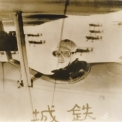
- Film still of Heartaches (1935-36)
Heartaches (1935, US; re-titled Iron Blood, Fragrant Soul for Hong Kong release in 1936)
Esther Eng's debut as associate producer had a good review at the time. The film was partially shot in colour and even had plane-fighting scenes. It was shown in foreign film-only Queen's Theatre and later distributed to Guangzhou and Southeast Asia.
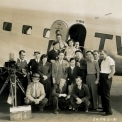
- Group photo of Heartaches (1935-36)
Heartaches (1935-36) was shot by renowned Hollywood cinematographer Paul Ivano and consulted by legendary James Wong Howe. Sadly, the film's only known copy was taken by the Japanese army during the occupation and had since lost. The picture here showed Esther Eng and some of the actors and crewmembers on location. A mixed race crew was not a common scene at that time.
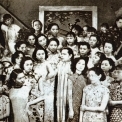
- Film still of It's a Women's World (1939)
First time in Hong Kong film history, Esther Eng's 1939 film It's a Women's World had an all-female cast.
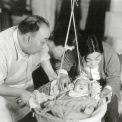
- Film still of Golden Gate Girl (1941)
Golden Gate Girl (1941)
Britain and Germany went to war in September 1939. Esther Eng returned to the US and engaged in fundraising campaigns among Chinese communities. She worked with Kwan Man-ching and Joseph Sunn Jue of Grandview Film (US) to make Golden Gate Girl (co-directed with Kwan Man-ching) with overseas Cantonese film artists.
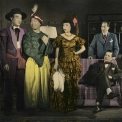
- Film still of The Blue Jade (1947)
The Blue Jade (1947, aka A Fair Lady by the Blue Lagoon, Hong Kong release in 1949)
Siu Fei Fei became Esther Eng's leading lady and Ronald Liu Kei-wai, aka Chinese Clark Gable, was the leading man. The film was shot in several scenic locations in California. This was Esther Eng's last directorial work for Grandview Film (US).
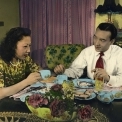
- Film still of Back Street (1948)
Back Street (1948, aka Too Late for Springtime)
Again, it starred Siu Fei Fei and Ronald Liu Kei-wai. This tragic love story was adapted from Hollywood film Back Street (1932 & 1942). Esther Eng was particularly interested in fruitless love tragedies. Through this adapted film, she brought out the collectiveness of women's issues across different cultures.
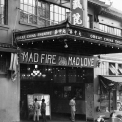
- Mad Fire Mad Love (1949) shown in San Francisco
Mad Fire Mad Love (1949)
The entire film was shot in the Hawaiian Islands. It was a love story purposefully depicting the conflict between the indigenous and Chinese people. It was shown at the Great China Theatre in San Francisco, then in Hong Kong a year after.
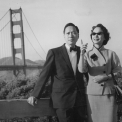
- Film still of Murder Case in Chinatown (1961)
Murder Case in Chinatown (1961)
Directed by Wu Pang and the story was originated by Esther Eng, who also served as location director for all the location shots in the US. She retired shortly after.
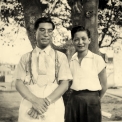
- Esther Eng and Wu Pang
Taken in Nanyang Studio with director Wu Pang when Esther Eng visited Hong Kong in 1938.
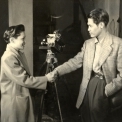
- Esther Eng and Chiang Wai-kwong
Esther Eng was taken in Grandview Film (US) with director Chiang Wai-kwong in 1946.
